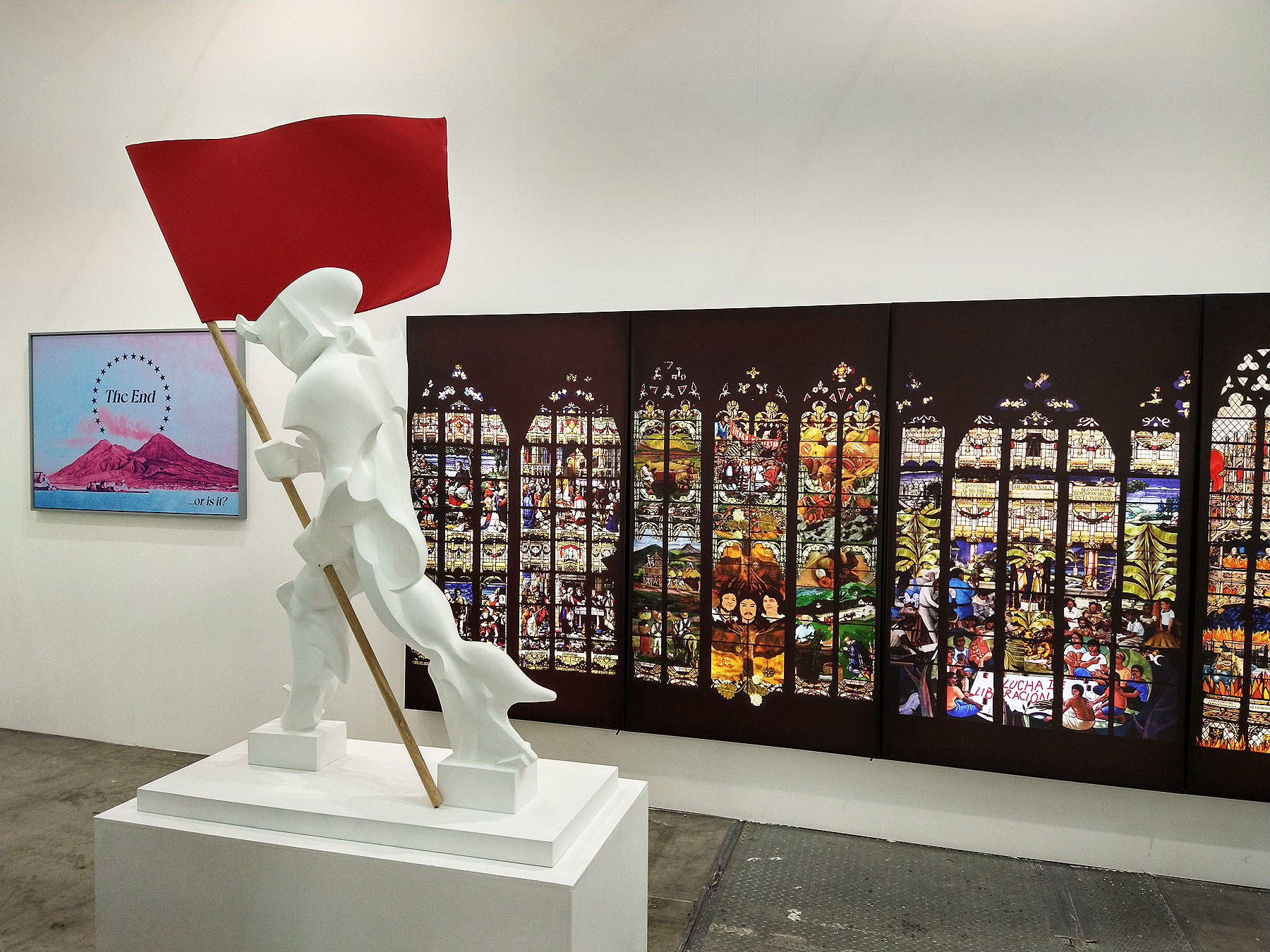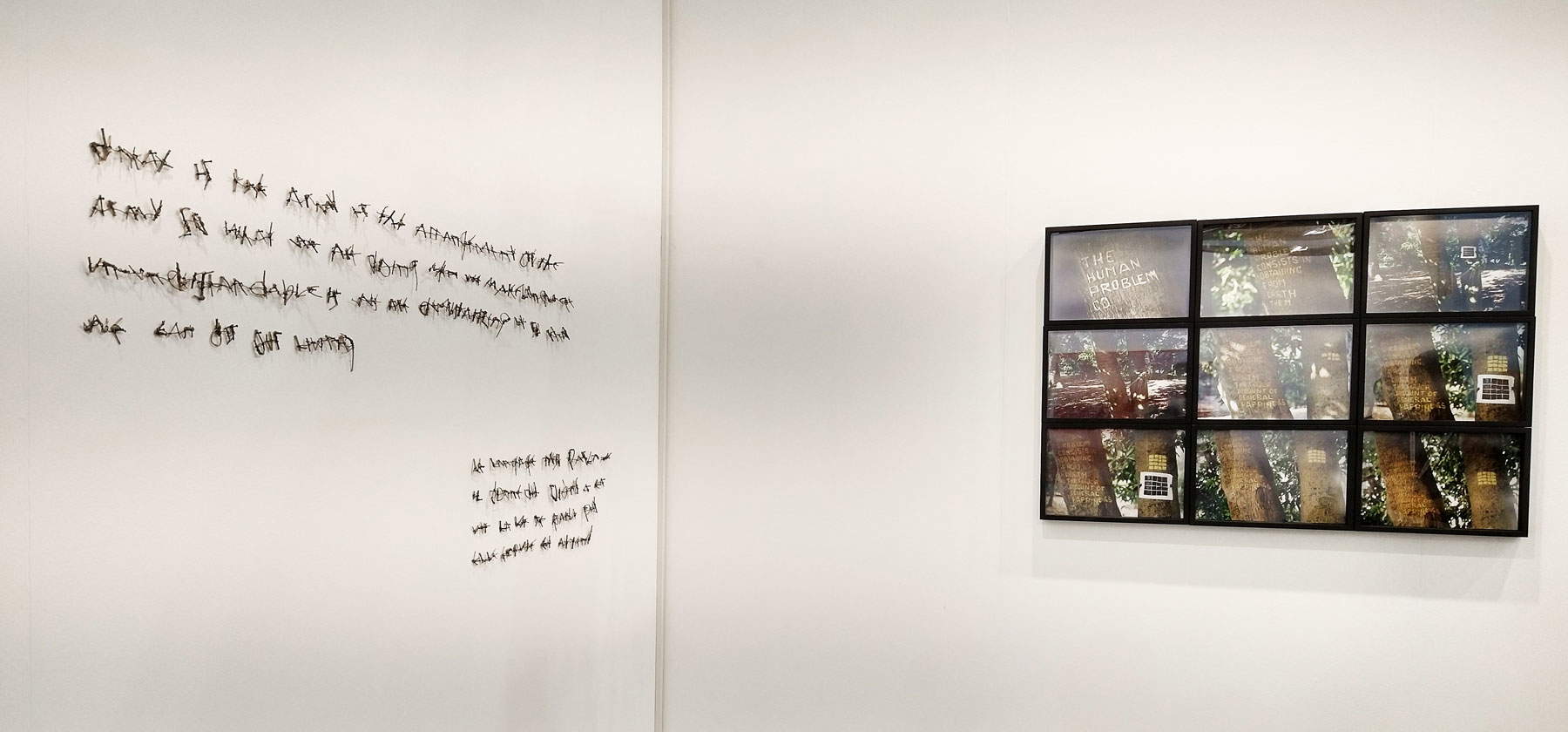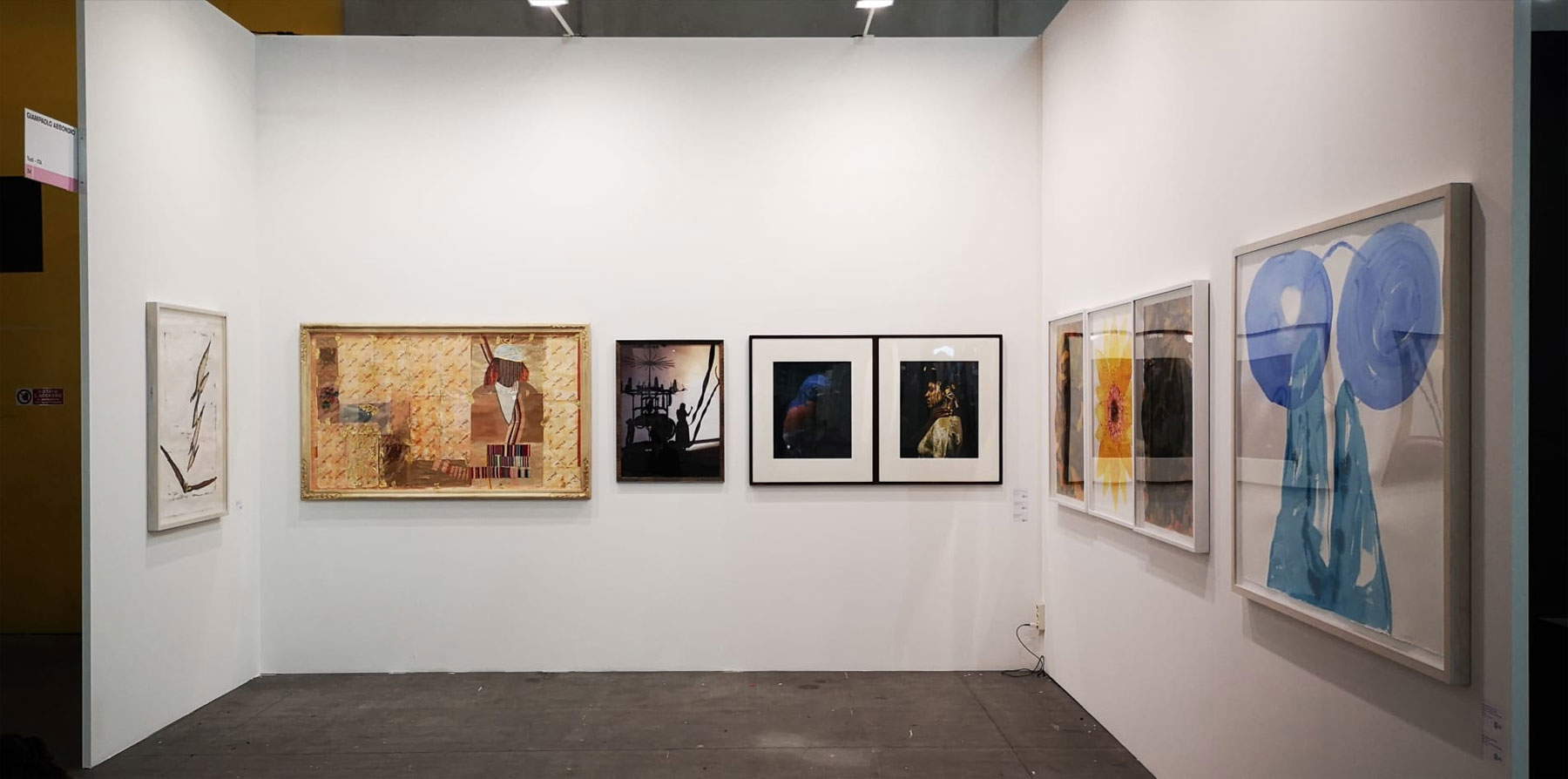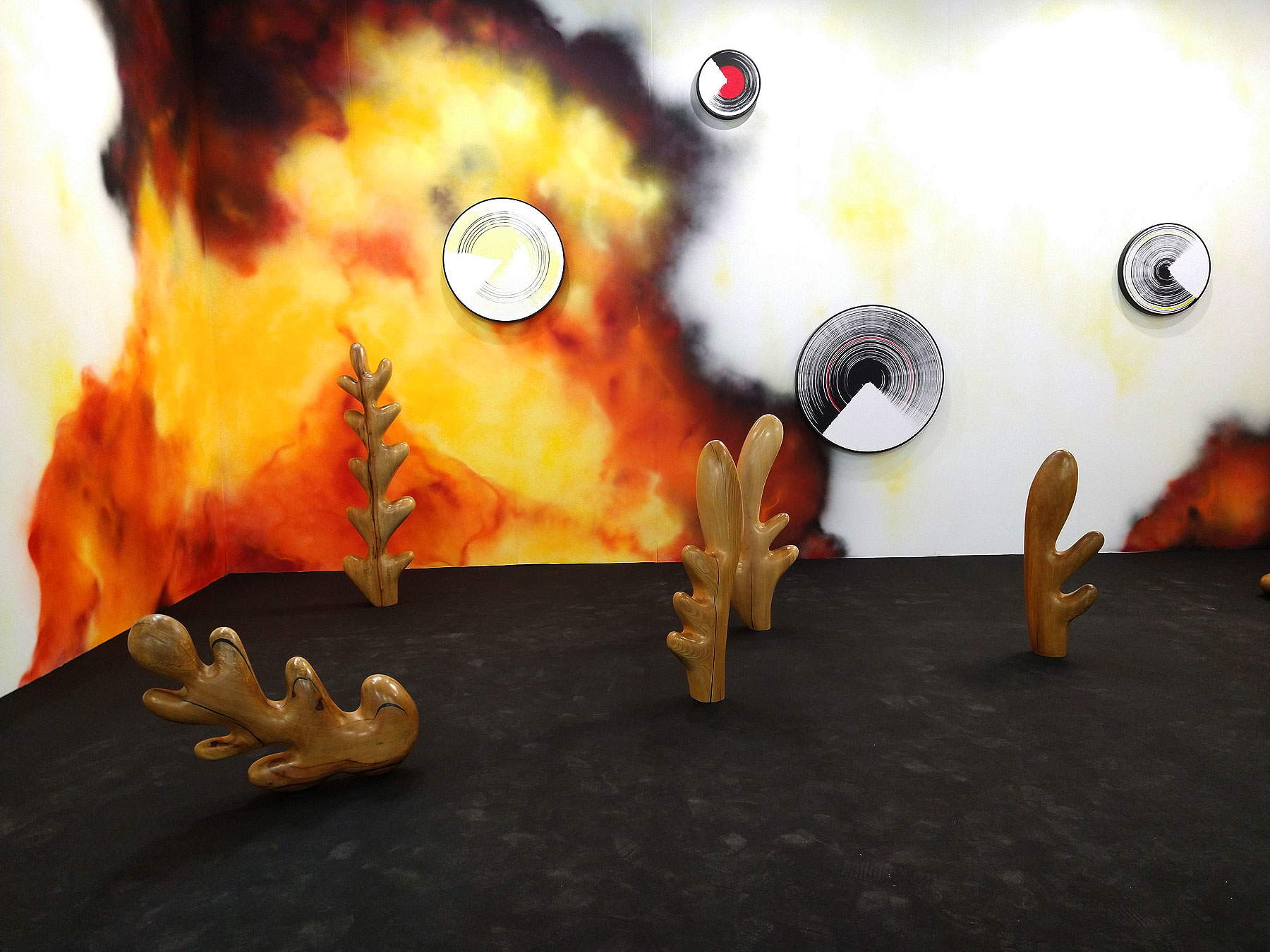The 28th edition of Artissima, Turin ’s contemporary art fair that, after a year-long stop imposed by the Covid-19 pandemic, returns Nov. 5-7, 2021, to the spaces of the Oval, opens today. “We have been living for almost two years alternating delays with accelerations, openings with restrictions, expectations with reworkings,” says director Ilaria Bonacossa. “The time of creation and the fruition of art have chased each other, sometimes meeting, finding new dimensions of sharing. Artissima has never stopped and has continued to support galleries and artists through both physical and digital projects constantly renewing itself in a world where all paradigms were being redefined.”
Artissima 2021 restarts from these premises and from the “conviction that contemporary art has the capacity to imagine a multiplicity of future scenarios,” the director continues. An edition that, as typical of the Turin fair, does not fail to address all the most pressing issues of our present: civil rights, memory, the role of women in society, marginalization, decolonization. Nor is there any shortage of works reflecting, as one might expect, on the theme of the pandemic. And there is no shortage, however, of booths tracing important experiences of the greatest international artists, or presenting their latest works. To give you an idea of what Artissima 2021 is all about, Finestre Sull’Arte, after visiting yesterday’s preview, brings you what our editors think are the 10 stands you should not miss.

The gallery from Turin is among those that attracted the most attention during the Artissima preview: its monographic stand dedicated to Richard Long (Bristol, 1945) is in fact one of the most interesting. The gallery is therefore offering a small monographic exhibition dedicated to the artist who has distinguished himself for his conceptual works. Famous are the artist’s solitary walks, long walks conducted in the absence of any kind of artificial mediation and human presence in wild places and scenarios in order to investigate and explore the human-environment pair. Evidence of these experiences are interventions made in situ and then photographed but also sculptures, maps, texts, and drawings. Artissima audiences can see a part of this production with interesting works such as the Human nature installation from 2012, and then again Space Earth from 2019, the photo and text work Walking from the ocean flowing to the ocean, and more.

The Modica gallery’s booth tells us about our time. Alejandra Hernández’s two works, Juan and Sara and Esteban and Juan Pablo, are part of the 2019 Their Altars series, whose subjects are live portraits in pre-pandemic times: portraiture gives a way to dig deep and get to know people, through couples that challenge notions of gender norms, romantic relationship, affection, and so on. And then again the homage to Boccioni by Igor Grubić(Unique forms of continuity in context of revolution from 1995), the work Europe will kneel to receive the anti-colonial spirit by Daniela Ortiz that takes a revenge on Belgium’s colonial past and in particular on the violent regime imposed by the European power on the Congo, the beautiful random images by Giovanni De Lazzari, the investigation on which a city can be “felt” by Adelita Husni-Bey, and much more.

The Bologna gallery features two young people, James Collins (Darlington, 1992) and Giulio Saverio Rossi (Massa, 1988), an artist to rediscover, namely Piero Manai (Bologna, 1951 - 1988), and an established artist, Damien Meade (Limerick, 1969). Collins has already distinguished himself internationally for his works that explore and question the boundary between painting and sculpture (his works arise from the superimposition of multiple layers of oil paint that create a jagged, rough surface, characterized by a very pronounced overhang), while Rossi’s work is a rethinking, in a critical, analytical and conceptual key, of the present-day role of painting as opposed to the digital dimension. Manai, who died prematurely at only 37, is an artist who is not reducible to any of the artistic practices in vogue in the 1970s and 1980s: rather, he is an artist who brings together various suggestions, from Transavanguardia to German espresisonismo. Finally, Meade offers works that are the result of a complex creative process through an interesting layering of media: sculpture, photography and oil painting.

In the New Entries section, the Livorno-based gallery stands out, offering a booth dedicated to the work of Mexican (but living in Livorno) Juan Pablo Macías (Puebla, 1974): his is a research on anarchism as a critique of representation, which is articulated in different processes taking different forms, namely editorial projects, poetry, videos, installations and performances that serve as scopes to highlight different situations produced by the encounter between power-knowledge and insurrection-knowledge, or between the system of representation and emotionality. His textual works made with olive branches stand out, the idea for which curiously came about in 2020 while the artist was harvesting olives: Macías began to see letters on tree branches, and decided to use the very branches, held together by wires, to transcribe quotations from different thinkers that Macías had collected for the On air project. The irregular shapes of these letters etch the white space that houses them, as if they were anti-neons.

The gallery directed by Giorgia Lucchi Boccanera participates in the Main Section of Artissima with a booth titled “Countertempo” and dedicated to the theme of time, in its broadest definition, which seems to have characterized the experience of the pandemic that hit the world at the beginning of 2020: the theme is addressed with a selection of five young and established artists namely Debora Hirsch, Cristian Avram, Federico Seppi, Gabriele Grones and Andrea Fontanari. The works of the very young Andrea Fontanari (Trento, 1996) stand out; he is present in the exhibition with two large-format paintings, Grey telephone and Telephone from 2021. The artist from Trento paints clippings of time that cut fragments of images where the representation, almost a cinematographic freeze sequence, seems to be never finished. In general, in the works of the five artists presented by Boccanera Gallery, the elements described in painting and sculpture become microcosms where events made of quick, sometimes imperceptible, comings and goings are measured.

Giampaolo Abbondio is present at the Main Section of Artissima with a monographic booth entirely dedicated to Cuban artist María Magdalena Campos-Pons (Matanzas, 1959), with a project curated by Francesca Pasini. María Magdalena Campos-Pons has always based her research on concepts of universal scope such as human and territorial history and memory, personal and gender identity, religion and culture of belonging. Campos-Pons’ artistic language draws directly on her own biographical experience, leading her as a woman and expatriate to focus on issues of strong resonance such as the civil rights movements of black people, large-scale migration flows, and social and gender inequalities. The works chosen by Francesca Pasini are placed in a period of time that almost corresponds to the history of the gallery itself: from the first photographic works, in which the artist portrayed herself by placing the female body at the center of reflection in relation to objects, symbols and ritual poses traceable to the sphere of values and traditions of her culture of origin, passing through the large installations of the early 2000s and up to the liquid atmospheres of the large papers that interpret the natural and social phenomena connected to the sea in the geographical area of Captiva Island in Florida. The wide range of media used interprets the wide variety of themes that have always been dear to the artist.

The stand of the German gallery König, directed by Sonja Schacht, is among the most eye-catching of the entire Artissima 2021: it is in fact a stand entirely designed by Swiss artist Claudia Comte (Morges, 1983), who has imagined fiery walls in front of which she has arranged her wooden “flames” (such as Fire Coral, Yellow Sponge, Soft coral), all made of different woods (such as plane tree, pear tree and other essences) and her circular paintings executed all with a single hand movement giving rise to surprising results.

Prominent among the international galleries in the New Entries section is the booth of Paris-based 31 Project, which brings three African artists to the show: Zimbabwean Georgina Maxim (Harare, 1980), Nigerian Kelani Abass (Lagos, 1979) and South African Aviwe Plaatjie (Cape Town, 1988). Maxim is a textile artist and her work is divided between art and curatorial practice. His works make use of embroidery, sewing and weaving techniques in order to deconstruct, cut and reassemble second-hand clothes. Through this operation, the artist creates synoglyphic works that elude any definition, and she herself describes her work as an act of memory, a transcription of the moment, of moments experienced and the stories evoked by these used clothes. Abass, through her works, investigates the importance of material heritage and the archive as a link between the present and the past: the photographic image, at the center of her practice, is broken down and analyzed into all its possibilities, to bring to light fragile evidence of a bygone era and a Nigeria that celebrated its independence. Plaatjie, one of the most interesting painters at Artissima, is a passionate chronicler of his community: in fact, he makes identity-based paintings, staging his subjects (friends, neighbors and family members) against inspiring and imaginary backgrounds.

Doris Ghetta is presenting at Artissima 2021 with a monographic booth devoted to South Tyrolean artist Martina Steckholzer (Sterzing, 1974). In her career, Steckholzer has explored themes such as representation in the arts, visual symbols of a cultural and historical period, and the role of painting as an epistemological tool. Inspired by the works of other artists and visits to places dedicated to art, Steckholzer draws on his emotions to evoke episodes experienced through his works. For Doris Ghetta’s booth, Steckholzer has created a dialogue between a series of works dedicated to the study of the representation of animals in the visual arts and art history with a selection of geometric and more conceptual works in which the artist confronts the spaces of the museums, galleries and institutions she has visited. Works that draw on the paintings of Pieter Bruegel (and in particular the depiction of domestic and wild animals), black-and-white works that examine architecture and spaces dedicated to art (starting, of course, with museums) and reinterpret them, works inspired by Rome, and more.

The London-based gallery brings to Artissima the work of two established international artists, French artist Caroline Achaintre (Toulouse, 1969) and Dutch artist Peggy Frank (Zevenaar, 1978). Achaintre’s works move conceptually on the border between abstraction and figuration: the artist creates characters, faces, masks, fantastical creatures and forms that lie somewhere between object and subject. His abstract works are both creatures, animate objects, human and animal at the same time, and take us into archaic, dark and mysterious worlds, going in search of the unknown. Achaintre, to make her works, uses materials such as wool, ceramics, and watercolor to create works with a strong physical impact and characterized by a rich and diverse language. Peggy Frank, on the other hand, is a painter interested in interior design, drawing inspiration from the works of Matisse and the artists of the CoBrA group. An artist who likes to experiment, she is present at Artissima with a number of paintings intended to convey a sense of intimacy and domestic familiarity.

Warning: the translation into English of the original Italian article was created using automatic tools. We undertake to review all articles, but we do not guarantee the total absence of inaccuracies in the translation due to the program. You can find the original by clicking on the ITA button. If you find any mistake,please contact us.